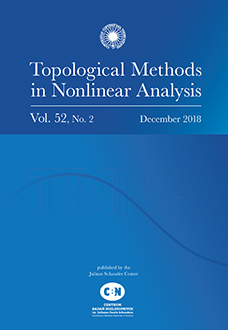Abstract
This paper is a sequel to our previous work [Morse decompositions in the absence of uniqueness, Topol. Methods Nonlinear Anal. 18 (2001), 205–242]. We first extend the concept of $\mathcal{T}$-Morse decompositions to the partially ordered case and prove a generalization of a result by Franzosa and Mischaikow characterizing partially ordered $\mathcal{T}$-Morse decompositions by the so-called $\mathcal{T}$-attractor semifiltrations. Then we extend the (regular) continuation result for Morse decompositions from [Morse decompositions in the absence of uniqueness, Topol. Methods Nonlinear Anal. 18 (2001), 205–242] to the partially ordered case. We also define singular convergence of families of "solution" sets in the spirit of our previous paper [On a general Conley index continuation principle for singular perturbation problems, Ergodic Theory Dynam. Systems 22 (2002), 729–755] and prove various singular continuation results for attractor-repeller pairs and Morse decompositions. We give a few applications of our results, e.g. to thin domain problems. The results of this paper are a main ingredient in the proof of regular and singular continuation results for the homology braid and the connection matrix in infinite dimensional Conley index theory. These topics are considered in the forthcoming publications [Continuation of the connection matrix in infinite-dimensional Conley index theory] and [Continuation of the connection matrix in singular perturbation problems].
Citation
Maria C. Carbinatto. Krzysztof P. Rybakowski. "Morse decompositions in the absence of uniqueness, II." Topol. Methods Nonlinear Anal. 22 (1) 15 - 51, 2003.
Information





